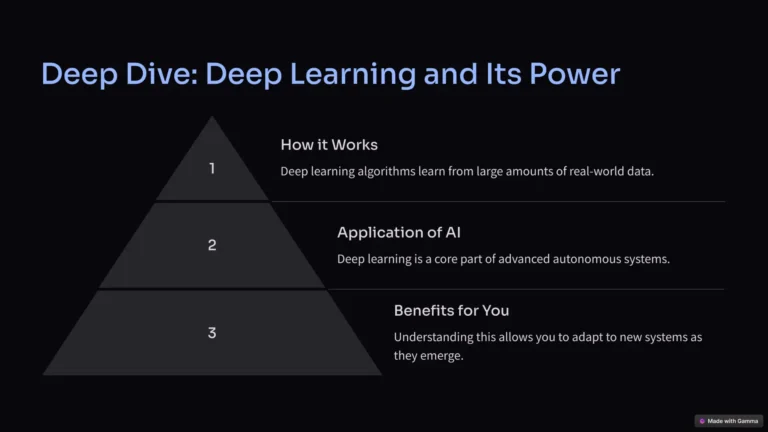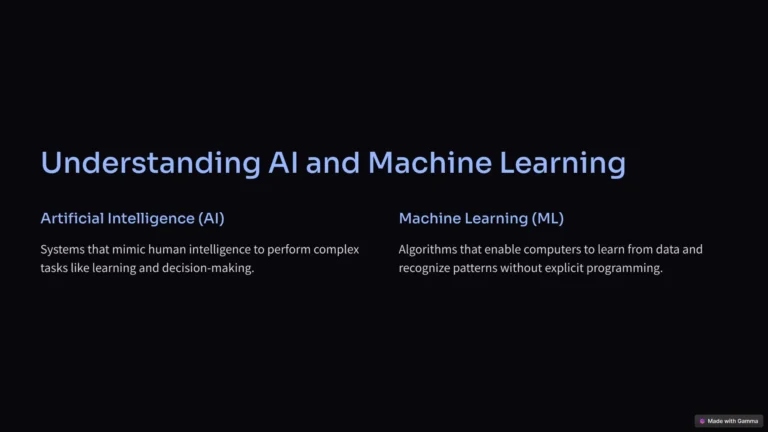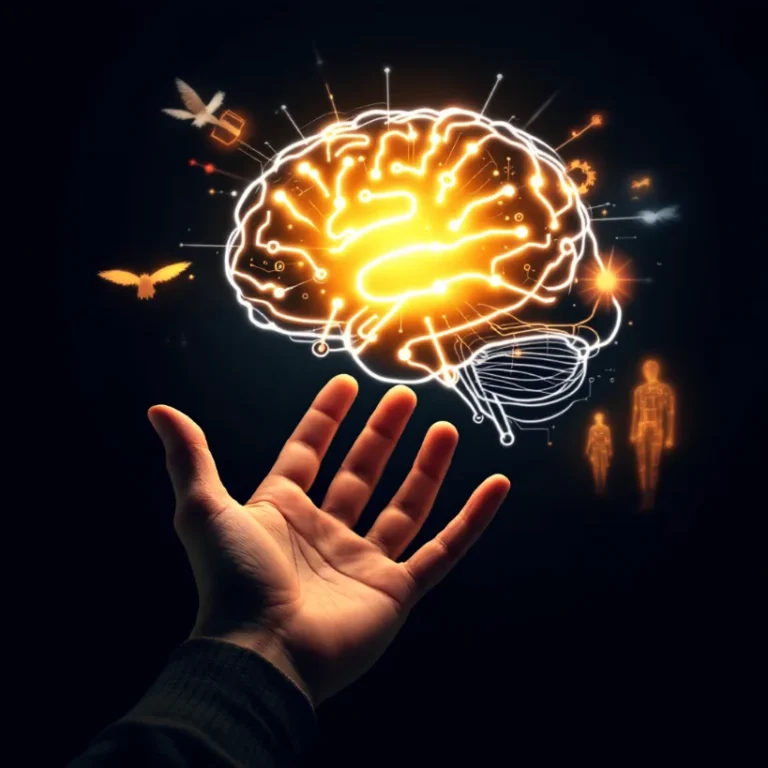How ChatGPT Works: 2025 AI Breakdown for Beginners
Are you curious about how chat GPT was built? The development of this natural language processing technology involves breakthroughs in deep learning algorithms, unsupervised learning techniques, and large-scale language models.
This article will provide an overview of the technology behind chat GPT, including how it can generate natural and human-like responses based on contextual understanding of words.
You might be wondering what makes chat GPT so powerful. One key factor is its ability to learn the structure of language through unsupervised learning. This means that the model is not explicitly taught how to understand language or generate responses; instead, it learns from huge amounts of data and identifies patterns on its own.
As a result, chat GPT can generate contextually relevant responses that are often indistinguishable from those generated by humans. However, building such a sophisticated technology comes with its own challenges, which we will explore in this article.
Key Takeaways

- Chat GPT was built using breakthroughs in deep learning algorithms, unsupervised learning techniques, and large-scale language models.
- Transfer learning has been a game-changer for NLP, allowing models to apply knowledge learned from one task to another.
- Attention mechanisms and transformer architectures have enabled models like GPT-3 to understand context better and produce more coherent responses.
- Developing a language model without relying on pre-written templates was a challenge during GPT development.
Overview of Natural Language Processing (NLP) Technology
NLP technology is what makes chatbots, like GPT-3, so darn impressive. It allows them to understand and respond to human language in a way that feels almost natural!
NLP applications involve using algorithms to analyze, interpret, and generate language. At the core of NLP lies machine learning, which enables machines to learn from data and improve their performance with experience.
However, with great power comes great responsibility. Ethical considerations in NLP development are crucial, as they impact how these systems interact with humans. It’s essential to consider potential biases and ensure fairness in language processing.
Breakthroughs in deep learning algorithms have enabled significant advancements in NLP technology. But, it’s equally important to prioritize ethical considerations while utilizing these tools for developing intelligent chatbots, like GPT-3.
Breakthroughs in Deep Learning Algorithms

Recent advancements in deep learning algorithms have revolutionized the field of Natural Language Processing (NLP). Transfer learning, a technique that allows models to apply knowledge learned from one task to another, has been a game-changer for NLP. With transfer learning, neural networks can now be trained on massive amounts of data and then adapted for specific tasks such as language translation or sentiment analysis. This approach has significantly reduced the amount of labeled training data needed and has allowed machines to learn more efficiently.
Neural networks, which are at the core of deep learning algorithms, have also undergone significant improvements in recent years. The introduction of attention mechanisms and transformer architectures has enabled models like GPT-3 to understand context better and produce more coherent responses. These breakthroughs in deep learning algorithms have paved the way for large-scale language models capable of producing human-like text with little to no input from humans.
With these advancements, we are closer than ever before to achieving truly intelligent conversational systems that can understand and generate language with ease. As we delve further into the topic of chatbots powered by artificial intelligence, it becomes important to discuss large-scale language models like GPT-3.
Large-Scale Language Models
The advancements in deep learning algorithms have given rise to large-scale language models that can produce human-like text with little input from humans. These models use linguistic analysis and neural networks to understand the structure and patterns of language, allowing them to generate coherent sentences and even entire articles.
One of the key breakthroughs in large-scale language models is their ability to learn from massive amounts of data without explicit instruction. This unsupervised learning technique allows the model to identify patterns and relationships within the data, which it can then use to generate new text.
As these models continue to improve, they have the potential to revolutionize industries such as journalism, content creation, and customer service by providing automated systems that can write high-quality text with minimal human intervention.
Unsupervised Learning Technique
You may be surprised to learn that unsupervised learning techniques are what allow these large-scale language models to generate human-like text with little input from humans. Clustering techniques and neural networks are two key components of unsupervised learning, which enables the computer to identify patterns and relationships within data without explicit guidance or labeled examples.
Clustering algorithms group similar pieces of information together, allowing the computer to recognize common themes and concepts. Neural networks, on the other hand, use a complex system of interconnected nodes to process data and make predictions based on patterns that they detect.
Together, these techniques enable computers to analyze vast amounts of unstructured text data and generate coherent responses in natural language. By using unsupervised learning techniques, chat GPT was able to create sophisticated dialogue that mimics human conversation without being explicitly programmed how to do so.
Moving forward into the next section about learning the structure of language, it’s important to note that this is achieved in a variety of ways by machine learning models like chat GPT.
Learning the Structure of Language

Ah, discovering the ins and outs of language structure is a task that even the most advanced AI models struggle with. The chat GPT model is no exception as it attempts to learn the language structure through unsupervised learning techniques. Understanding syntax and semantic analysis is crucial for the model to comprehend human speech and respond appropriately.
Syntax refers to the rules governing how words are arranged in a sentence. For example, in English, we generally say “the cat sat on the mat”rather than “mat on sat cat the.”
Semantic analysis involves understanding the meaning behind words and how they relate to each other in a sentence. By analyzing large amounts of text data, chat GPT can begin to understand these complex linguistic structures. It can use this knowledge to generate responses that make sense within their given context.
But this is just one piece of the puzzle. Next comes contextual understanding of words.
Contextual Understanding of Words
Now that you’ve learned about the structure of language, let’s dive deeper into the current subtopic: contextual understanding of words. This is an essential aspect of building chat GPT because it allows the model to comprehend phrases and sentences in a more human-like way.
Semantic analysis plays a significant role in contextual understanding as it enables the model to understand the meaning behind individual words and how they relate to one another. Word embeddings also come into play here, which are mathematical representations of words that allow them to be compared and analyzed by machine learning algorithms.
By incorporating both semantic analysis and word embeddings, chat GPT is able to have a better understanding of not only what’s being said, but also why it’s being said. With this level of contextual understanding, chat GPT can generate natural and human-like responses that feel like they were written by a person rather than a machine.
In the next section, we’ll explore how this is achieved through fine-tuning and training on large datasets.
Generating Natural and Human-Like Responses

By incorporating semantic analysis and word embeddings, language models can create responses that are not only coherent but also sound natural and human-like. This approach has helped improve the accuracy of chatbots like GPT by enabling them to understand the context of a conversation and respond appropriately.
Here are some ways in which this technique is used:
- Analyzing sentence structure: By breaking down sentences into parts of speech, chatbots can better understand the meaning behind each word and how they relate to one another.
- Identifying intent: Chatbots use machine learning algorithms to identify the intent behind a user’s message, allowing them to provide more accurate responses.
- Personalization: With access to user data, chatbots can tailor their responses based on past interactions with specific users.
- Ethical considerations: As language models become more advanced, it’s important for developers to consider ethical implications such as bias and misuse.
Despite these improvements, there were still many challenges faced during GPT development. One of the biggest hurdles was creating a system that could generate coherent and relevant responses without relying on pre-written templates or scripts.
Challenges Faced During GPT Development
Developing a language model that could generate coherent and relevant responses without relying on pre-written templates or scripts was one of the biggest challenges faced during GPT development. This required the use of advanced Natural Language Processing (NLP) techniques to ensure that the generated responses were not only grammatically correct but also semantically meaningful.
The model had to be trained on vast amounts of text data to learn how humans communicate, understand context, and interpret meaning. To develop an effective GPT, ethical considerations had to be taken into account. As with any AI application, there’s always a risk of biased output or misuse by malicious actors.
Therefore, it was essential to ensure that the model was designed with fairness and transparency in mind. NLP application examples such as chatbots have been known for their potential harm when not properly implemented. By building GPTs with ethical considerations in mind, developers can create AI applications that benefit society while minimizing negative impacts.
Conclusion

Congratulations! You’ve just explored the fascinating world of Natural Language Processing (NLP) technology and the groundbreaking advancements in deep learning algorithms that led to the development of GPT.
By utilizing large-scale language models and an unsupervised learning technique, GPT has achieved an unparalleled level of contextual understanding of words. This enables it to generate natural and human-like responses.
However, this achievement did not come without challenges. The team faced numerous obstacles during GPT’s development, including data bias, computational limitations, and ethical concerns surrounding AI language models.
Nevertheless, they persevered and created a remarkable tool that can revolutionize the way we communicate with machines.
So next time you chat with GPT, take a moment to appreciate the intricate process that goes on behind the scenes to make your conversation possible.
I’m Alexios Papaioannou, an experienced affiliate marketer and content creator. With a decade of expertise, I excel in crafting engaging blog posts to boost your brand. My love for running fuels my creativity. Let’s create exceptional content together!







